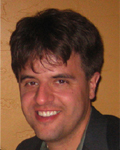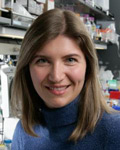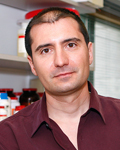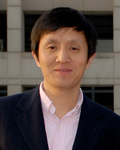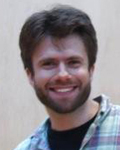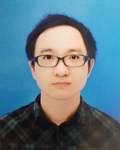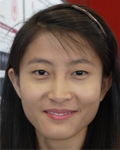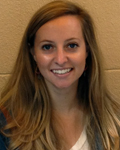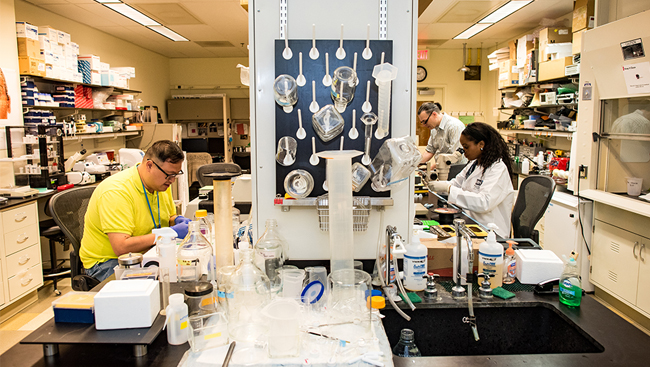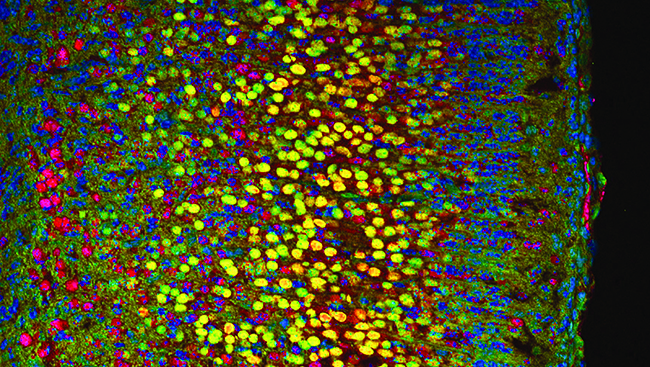This event took place on September 20, 2018 and is no longer available on-demand.
Optogenetics is a powerful technique that combines genetic and optical methods to enable precise manipulation of living cells and investigation of neural circuitry and brain function for a variety of research applications.
In this virtual conference — organized by Alexandra Nelson (University of California, San Francisco) and Veronica Alvarez (NIH Intramural Research Program/NIAAA) — speakers will explore the frontier of optogenetics tools and applications and discuss where optogenetic technologies are headed.
This conference serves as the culmination of SfN’s inaugural training series on optogenetics, developed in partnership with global neuroscience leaders. While it is recommended you view some resources before attending the virtual conference, you can participate without doing so.
Advances you will hear about in the virtual conference include:
- Development of next generation opsins and technologies.
- Integration of optogenetics with complementary techniques, including electrophysiology, imaging of calcium and membrane potential, anatomical methods, and behavior.
- The utility of optogenetics in different species, including Drosophila, zebrafish, and non-human primates.
- Potential emerging clinical and therapeutic applications of optogenetics tools.
You have the opportunity to ask speakers your questions live during the virtual conference sessions. You can also submit your questions ahead of time by emailing digitallearning@sfn.org with the subject line, Speaker VC Question, and in the email specify to whom your question is directed.
Watch short videos from neuroscientists in the field as they describe important methods, concepts, and data from their lab. The videos are available on
Neuronline.
Click on each session title to reveal its description.
Session 1: Next Generation of Opsins – Part 1
Speakers: Ed Boyden, Michael Bruchas
Time: 10:00 a.m. EDT
Ed Boyden, co-inventor of optogenetics, will give an overview of opsins and introduce their origins and how they work. He will discuss new opsins and how they can enable new kinds of experiments, such as single cell resolution optogenetics.
Then, Michael Bruchas will present non-canonical modulatory opsins and will discuss novel experimental methods using light-activated GPCRs. He will discuss merging neuromodulatory methods with new wireless hardware and pharmacological approaches.
Session 2: Next Generation of Opsins – Part 2
Speakers: Yoon Seok Kim, Viviana Gradinaru
Time: 11:00 a.m. EDT
Insight into the structural features of channelrhodopsins (ChRs) is critical to understanding how these channels work and to develop new optogenetic tools. Crystal structures now enable a fundamental understanding of important features of ChR function, including ion selectivity, kinetics, and absorption spectrum.
Yoon Seok Kim will describe structural features of cation- and anion-conducting ChRs crucial not only for their value for basic science but also for the development and application of many classes of enhanced optogenetic tools. Then, Viviana Gradinaru will present her lab’s work on new opsins that function as genetically-encoded voltage sensors and share new advances in minimally-invasive optogenetics with systemic AAV administration and high-conductivity opsins. A short Q&A will follow the presentations.
Keynote Address: Optogenetics – A Look Forward, and a Look Back
Speakers: Karl Deisseroth
Time: 12:00 p.m. EDT
In this keynote address, Karl Deisseroth will present the evolution of optogenetics as a way to study and understand nervous systems. He will discuss the operation of optogenetics from acute to chronic time scales, over local to global spatial scales, and from single cells to ensembles of cells within behaving animals.
Deisseroth will explore the alignment of optogenetics with the timing and magnitude of naturally occurring events and give insight into the structure and function of natural and designed microbial optogenetic tools that have implications for applications, current limitations, and challenges for the future.
Session 3: Merging Imaging and Optogenetics – Methodologies and Constraints
Speakers: Bernardo Sabatini
Time: 12:30 p.m. EDT
Combining optogenetics with other techniques, notably imaging, can be extremely useful to improve the accuracy of scientific findings but challenging to implement. Bernardo Sabatini will first discuss the technical limitations (and the potential solutions) that constrain simultaneous optical monitoring and control of neural activity. Then, Sabatini will discuss novel methods, such as using tapered optical fibers for simultaneous bulk imaging and manipulation of neurons in deep brain structures. A short Q&A will follow the presentation.
Session 4: Activity-Dependent Optogenetic Tools
Speakers: Liqun Luo
Time: 1:30 p.m. EDT
Tools that allow for the manipulation of neuronal subpopulations have greatly improved our understanding of how neural activity underlies behavior. However, it can be challenging to distinguish heterogeneous functions of neuronal populations that are anatomically and genetically identical.
To overcome this limitation, Liqun Luo has developed an approach that combines activity-dependent genetic labeling of neurons — Targeted Recombination in Active Populations (TRAP) — with optogenetic manipulation of these previously activated cells. In this session, Luo will introduce TRAP methods and present several uses of TRAP2 mice in the context of thirst motivation and remote memory. A short Q&A will follow the presentation.
Session 5: Contributions of Parallel Nigrostriatal Dopamine Circuits to Reward Learning and Habit Formation
Speakers: Talia Lerner
Time: 2:30 p.m. EDT
The development of optogenetics in combination with other techniques has enabled the manipulation of distinct neuronal pathways. Talia Lerner will present new data to demonstrate how her team uses intersectional optogenetic tools to dissect habit formation circuits. Habit formation, which allows the fluid, nearly effortless execution of complex motor tasks, requires an interface between the brain circuits underlying reward learning and motor learning.
The Lerner lab used optogenetic approaches to uncover dynamic changes in connectivity between striatal subregions and their dopaminergic inputs. These changes track with habit formation and predict mechanisms by which motor actions become automated. A short Q&A will follow the presentation.
Session 6: Diversity of Species Applications for Optogenetics
Speakers: Vanessa Ruta, Misha Ahrens, Azadeh Yazdan-Shahmorad
Time: 3:30 p.m. EDT
Three neuroscientists will demonstrate the use of optogenetic applications to study the neurobiology of non-rodent species.
First, Vanessa Ruta will share how optogenetics gives her lab the ability to study activation-induced long-lasting states in Drosophila brains in the context of learning. Next, Misha Ahrens will present his work on whole brain functional mapping using optogenetics and single cell two-photon ablation in larval zebrafish. Finally, Azadeh Yazdan-Shahmorad will discuss how stimulation-evoked activity impacts connectivity in the non-human primate cortex. A short Q&A will follow the presentations.
Session 7: Clinical Applications of Optogenetics
Speakers: Rob Malenka, Phil Starr, Patrick Degenaar, Alexandra Nelson
Time: 4:30 p.m. EDT
Optogenetics is a powerful technique with high temporal resolution and cell type-specificity. These characteristics could be extremely useful in the development of new treatments for neurological and psychiatric diseases and disorders with fewer side effects than therapies currently available to patients.
In this panel discussion moderated by virtual conference co-organizer Alexandra Nelson, Rob Malenka and Phil Starr will share their insight on clinical and therapeutic applications for optogenetics. They will address the current and potential utility of optogenetics to model and treat diseases such as dystonia, Parkinson’s disease, addiction, and psychiatric diseases. The panelists will also discuss challenges presented by working with human patients, limitations of using optogenetics in humans, and possible alternative technologies for clinical applications. The speakers will answer questions from attendees.
On-Demand Data Blitz Sessions
Speakers: Shuo Chen, Ana Domingos, Linlin Fan, Ally Girasole, Ian Oldenburg
These 5-10 minute sessions on various topics can be viewed at any point on-demand once the virtual conference environment opens.
- Near-Infrared Upconversion Optogenetics
- Sympathetic Optogenetics for Neuroimmunity
- Optogenetic Dissection of Brain Circuits Causing Levodopa-Induced Dyskinesia
- Multiphoton Optogenetic Silencing of Groups of Neurons In Vivo
- All-Optical Electrophysiology of Cortical Layer 1 Neurons In Vivo
